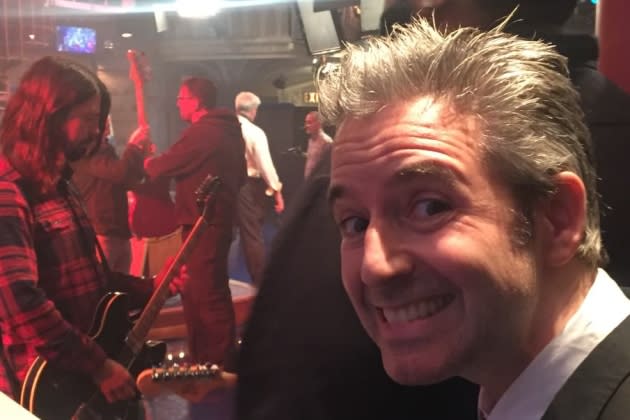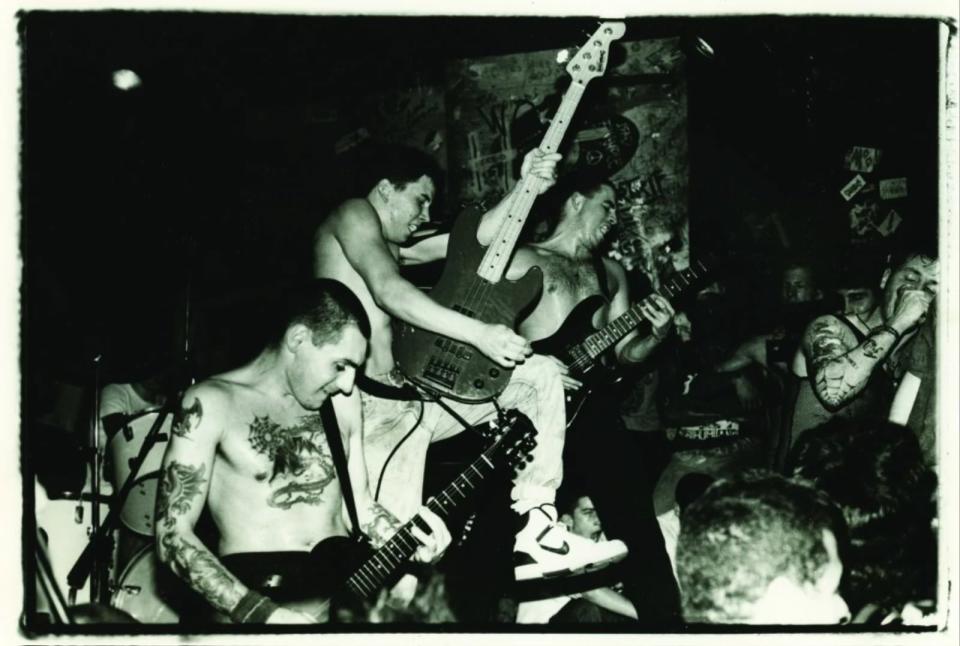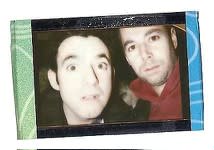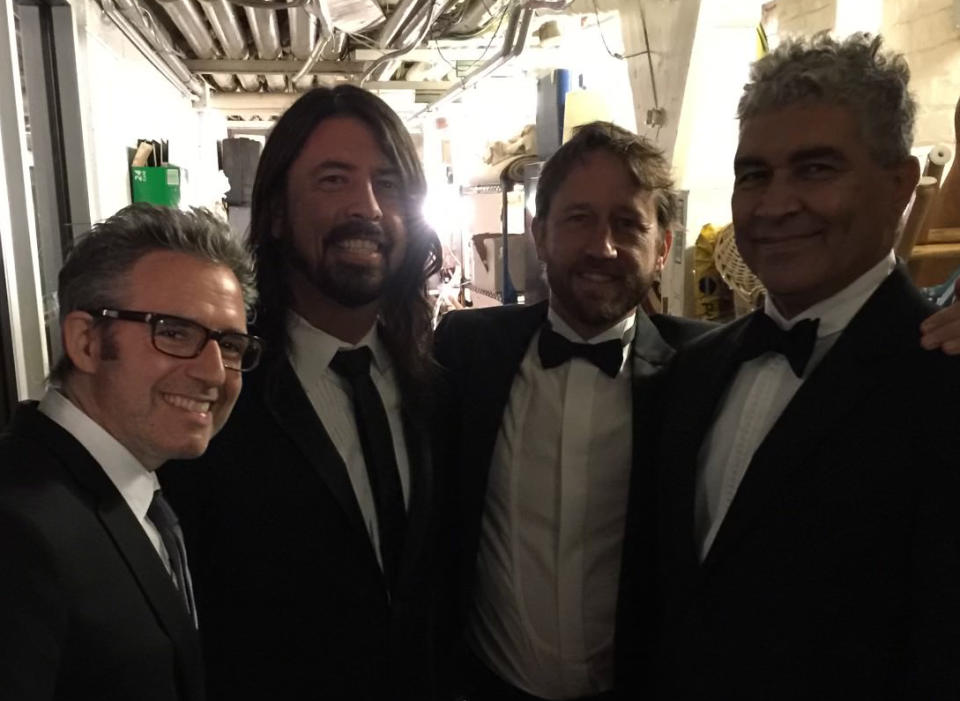Nasty Little Man Turns 30: Founder Steve Martin on Working With Paul McCartney, Foo Fighters, David Bowie and How Music PR Has Changed
- Oops!Something went wrong.Please try again later.
- Oops!Something went wrong.Please try again later.
- Oops!Something went wrong.Please try again later.
- Oops!Something went wrong.Please try again later.
- Oops!Something went wrong.Please try again later.
- Oops!Something went wrong.Please try again later.
- Oops!Something went wrong.Please try again later.

The music industry is filled with many high-powered publicity firms, but Nasty Little Man’s might be the most stacked in the business: Paul McCartney, David Bowie, Foo Fighters, U2, Radiohead, Beastie Boys, Metallica, Nine Inch Nails, Damon Albarn and Gorillaz, LCD Soundsystem, Iggy Pop, Beck and many more have been clients of the firm over the last 30 years. Artists of this caliber rarely need to do much, if any, press, but under the stewardship of Nasty founder Steve Martin, they have not only found continual new ways to engage with the media but also elevate their profiles at a time when the industry is more fragmented than ever.
Since founder Steve Martin launched the company from a Downtown New York apartment in 1992, Nasty has developed a reputation not only for its top-shelf clients but also the longevity of its relationships: The above artists and many of the employees have been with the company for many years, and current VPs Laura Eldeiry and Michele Hug both started as interns.
More from Variety
Martin, 57, grew up in Long Island and vividly remembers watching Bowie’s performance of “Fame” on Cher’s variety TV show and thinking, “Wherever that guy is going, that’s what I’m going to do with my life.” From there, Martin learned how to play guitar, formed “some really bad teenage bands” with local friends, began pursuing journalism at Boston University and eventually joined hardcore legends Agnostic Front in 1986 for a three-year stint on lead guitar.
In honor of Nasty’s 30th anniversary, Martin sat with Variety for a rare interview about his start in the business, his philosophy of music publicity, his nearly three-decade-long association with manager John Silva, the aftermath of Foo Fighters drummer Taylor Hawkins sudden death in March and how his company’s name wound up in the title of a 1998 Beastie Boys album.
As a music-obsessed Long Island teenager, when did you start sneaking into New York City to see shows?
The first one was when I was 14 — the Police at the Palladium on the “Regatta de Blanc” tour, with U.K. Subs and Steel Pulse. It didn’t even occur to me until halfway through that I didn’t have any parents with me. They were really cool, and they indulged me. I was the first-born kid, but the last to find my special purpose. Once I did, my parents totally encouraged it.
When did you join Agnostic Front?
I joined during the tour for their [1986] second album, “Cause for Alarm.” I had gone to a lot of early hardcore matinee shows: Bad Brains, Kraut, Channel 3, the Misfits, Minor Threat, D.R.I. Back then, you’d go to the show by yourself and make friends there — some of my closest friends to this day are people I met in that scene. When I went to Boston University to get my journalism degree, I played in a band called the F.U.’s. They morphed into a band called Straw Dogs, and we opened for Agnostic Front. My friend John was roadie-ing for them and told me they were going to kick out the lead guitar player. I was moving back to New York, so I auditioned and got the gig.

When did you get your first taste of publicity?
In college, I wrote for some friends’ fanzines and publications like Thrasher. When the band wasn’t on tour, I’d go in part time as a contributing editor to what was then called the Island Ear newspaper. That’s where I learned what a publicist does. The business side happened because the singer of Agnostic Front was going to jail for a little while, and I needed something to do. We had a meeting at our label at the time, Relativity, where I presented some ideas about how to keep up our profile, like a live album, a benefit for his legal costs or a video. Alan Becker, who is still the SVP of RED [the Sony-owned distribution company that Relativity evolved into], said, “You have some good ideas. Why don’t you take this publicity assistant job we have?” I took it — otherwise I was going to have to start thinking about who I was going to audition for next.
When did you make the move from Relativity to your own company?
Managers would say, “We like working with you, but we’re getting offered a seven-figure deal from Interscope.” Finally, I went to a couple of them and said, what if I started a company just doing what I do? [Early Interscope rock act] Helmet was the first one to say yes, and their manager, Dave Ayers, wrote me into their deal. I started doing PR full-time, but I didn’t start the company until the following year because I was still writing a lot. Even a couple hundred dollars per feature added up when my rent was $450 a month.
Where did the name “Nasty Little Man” come from?
At Relativity, we had to work a lot of terrible releases, and one of my superiors was like, “You were getting so much good press — then it dried up.” I told them, “It’s because the stuff you’re making me work is garbage and no one likes it!” They said, “You don’t like anything! You’re just a nasty little man!” I thought that was so funny, but it reinforced my belief that I had to figure out a way to work for myself.
What were the early days like?
Very DIY: I had a small one-bedroom in the West Village and I was servicing press out of my house, [the landlord] was willing to look the other way because the building wasn’t zoned for business. Then I rented a huge two-bedroom apartment from him and paid him $1,500 cash per month. Perry Serpa and [future Chavez frontman and Iggy Pop/ Bonnie Prince Billy collaborator] Matt Sweeney worked with me there.
The first eight years were a blur. The first Helmet record we worked went gold, and by ’93, I was working with the Beastie Boys and Luscious Jackson. We did the Smashing Pumpkins’ “Siamese Dream” campaign and Dinosaur Jr. By ’95, we had Foo Fighters; I think we started with Rammstein in ’96; Radiohead came in the late ‘90s. I ended up hiring [future top publicists] Shelby Meade, Sheila Richman, Julie Underwood, Jessica Ricci and Lou Ardolino.
By 2000, I had three or four rainmakers who were all bringing in five-figure monthly grosses. I was making a lot of money, but I was miserable. I was an administrator, spending way too much time with people wanting status updates or to complain. But I remember this moment really clearly: We confirmed Radiohead’s first feature in the New Yorker, during the “Kid A” / “Amnesiac” period. I said, “I’m gonna cover this one,” because they didn’t want the writer riding with them on the tour bus. I rented a car for this run of shows and I drove the writer, Alex Ross, around. It got me back into gauging when was the right time to ask each band member to do the interview and going over talking points with the writer — basically, being a publicist again. When I got back from that trip, my first call was to my business manager to ask him, how do I whittle the roster down just to the stuff I love and go back to being more hands-on? I made considerably less money, but that really wasn’t the point.

Did you meet John Silva through the Beasties?
Yes, he’s one of my best friends now, but our first campaign together was [the 1994 album] “Ill Communication.” The following year, John told me Dave Grohl had decided to start a band called Foo Fighters instead of joining up with somebody else. I went to meet with him at the Foos’ first East Coast show, opening for Mike Watt in Philadelphia in the spring of ’95. I’d actually met Dave before when he was in [his pre-Nirvana band] Scream and they were opening for Agnostic Front.
Were you at all apprehensive about working with Dave so soon after the demise of Nirvana?
Absolutely not. I was always all-in with them, but I definitely encountered skepticism, especially on the industry side. The press side was really interested, but we had to make a rule that if you asked Nirvana questions, the interview was over. It wasn’t the easiest ride at that point. I had a lot of people trying to get me to work bands who were selling millions, or were Nirvana knock-offs, or were making music I just didn’t like. They’d always target Dave and say, “You think the drummer from Nirvana is going to be as big of a rock star as this band you’re turning down?” I’d always say, “I just like their music better.” I never understood why somebody would want me to represent them if I didn’t like their music that much.
Who came up with the “Hello, Nasty” salutation that later became the title of a Beastie Boys album?
A Japanese woman named Toco Hara, who one day just started answering the phone that way. The Beastie Boys loved Toco. She actually worked as a translator for David Bowie years before I ever worked with him.
At what point did they tell you they were going to use it for the name of their album?
They didn’t tell me! We used to have teleconferences with Capitol Records, and they had an all-hands-on-deck to play the album for people for the first time. At some point during the meeting, I remember [then-label president] Gary Gersh saying, “We’ll have ‘Hello Nasty’ name tags for every record store employee and ‘Hello Nasty’ shopping bags at every music chain.” I was like, “What is going on?” That’s when the band broke it to me — they did a really good job of making sure that didn’t leak to me.
Were there many culture clashes between you and major-label PR teams?
I remember having a knock-down, drag-out with Capitol’s in-house PR department, because they landed the cover of Details for the Beastie Boys when I had confirmed them that same month to be the first white artists ever to be on the cover of Vibe. Eventually, Silva had to step in and say, “We’re doing Vibe first.” I questioned myself a lot at the time, because I was arguing with people who’d been at Capitol for decades. But I kept coming back to, “What would I as an artist want to see happen? What would I as a fan think is cooler?” Those have always been the guiding lights.

You and Silva seem to intentionally work so far under the radar.
In an ideal world, my job is done most effectively when it looks like everything has just magically happened. No one needs to know or even acknowledge or imagine the months of negotiation that went into the terms of an interview or podcast or late-night TV performance.
Nasty also works with a lot of artists who barely, if ever, do press. It might be easy for you to just say no to everything on their behalf, but is there a more nuanced approach?
It’s case by case. It has become apparent to me that Damon Albarn isn’t going to do much press, so we’re shifting the focus to get more creative with the animated characters of Gorillaz. With the Bowie “Blackstar” campaign, we did a movie theatre premiere of the title track video and had [longtime producer] Tony Visconti answer questions afterwards. If you build up goodwill with a client and tell them, “This is the exception” or “This is the one person who you should talk to,” you can get someone who is press-averse to trust you. There are certainly a good number of clients on my roster who would quite happily never do another interview.
How do you handle terrible situations like Taylor Hawkins’ death?
It’s hard to say. Unfortunately, in the last 10 years, I’ve had to write confirmations of an artist’s passing three times: Adam Yauch in 2012, Bowie in 2016 and Taylor earlier this year. The first step is getting the right tone when you’re writing that statement. I don’t know how I do it, because it has always been done in a state of shock. It’s a blessing and a curse that I’ve seemed to get it right in all three of those situations.
With Taylor, it was more sensitive, because there were a lot of details coming out from the Colombian media. There was a lot of second-hand talk in another magazine story, with people relaying things Taylor might have actually said but should have been left to friends talking amongst friends. Managing that, and trying to make it cause as little pain as possible, was a really delicate procedure.
It was really rough: I’m very pragmatic about who amongst the clients becomes an actual friend, but Taylor was one. If the band didn’t work for four or five weeks and we didn’t have any contact, he’d call me just to say “What’s up?” He did that with a lot of people he considered friends, which I didn’t really learn until after he died. He had so much energy and positivity to share. He didn’t have to do that: He played drums full-time in one of the biggest bands in the world, had all his side projects and session work, and was helping to raise three kids. He somehow found the time to brighten so many people’s days with these morning calls about a U2 b-side or something.
When did Paul McCartney enter your orbit?
I started working with him in the summer of 2008. [Manager] Scott Rodger called me and said Paul was getting ready to release an album as “The Fireman,” and thought he could use a fresh perspective PR-wise. Paul had come across Scott because of Arcade Fire, and told him he also wanted to talk to whoever handled Dave Grohl in the States. We met — at Abbey Road — and hit it off pretty quickly. I’ve always gotten along with him, since day one, and it will be 15 years next year.
Is it fun to be writing tour blogs for Paul’s website?
Yes, although it’s kind of exhausting. It’s fun because he asked me to do it personally. I write the entries, email them to him and he tells me whether he likes them or not. Fortunately, he usually does. He wants people’s opinions when he works with them, but that’s not unusual for my artists. They’re paying for more than just, “OK, I got you the booking, now go tear it up.”
What can you say about your time representing David Bowie around “Blackstar,” which turned out to be his final album?
I was only his publicist for about six months when he was alive. I have an NDA so I can’t talk too much about the particulars, but I got a unique perspective because I didn’t know he was sick; he didn’t look it. I had a couple of months listening to “Blackstar” before it became known more as the album he made right before he died. Before, it was like, “This is so musically adventurous and it’s my favorite Bowie album since ‘Scary Monsters,’ I’ve been waiting for this since 1980.” But after that day in January of 2016, it was a different album: It was his swan song. I regret that I never really got to know him. If I look at the positive, there’s still a lot of mystique to him, and it was his mystique that drew me into this entire livelihood in the first place.
What’s the most challenging part of your job today?
It’s like the wild, wild west out there, and no one can tell you what will have the most impact. You have to be really adaptable, do a lot of research and make sure you’re making the right choices, especially when a lot of my artists don’t like to do much of anything. The challenge is keeping things exciting, but also keeping the artists engaged. These are artists whose music has shaped my life, and whom I care about as people. I want to keep it fresh for them too.
Best of Variety
Sign up for Variety’s Newsletter. For the latest news, follow us on Facebook, Twitter, and Instagram.

